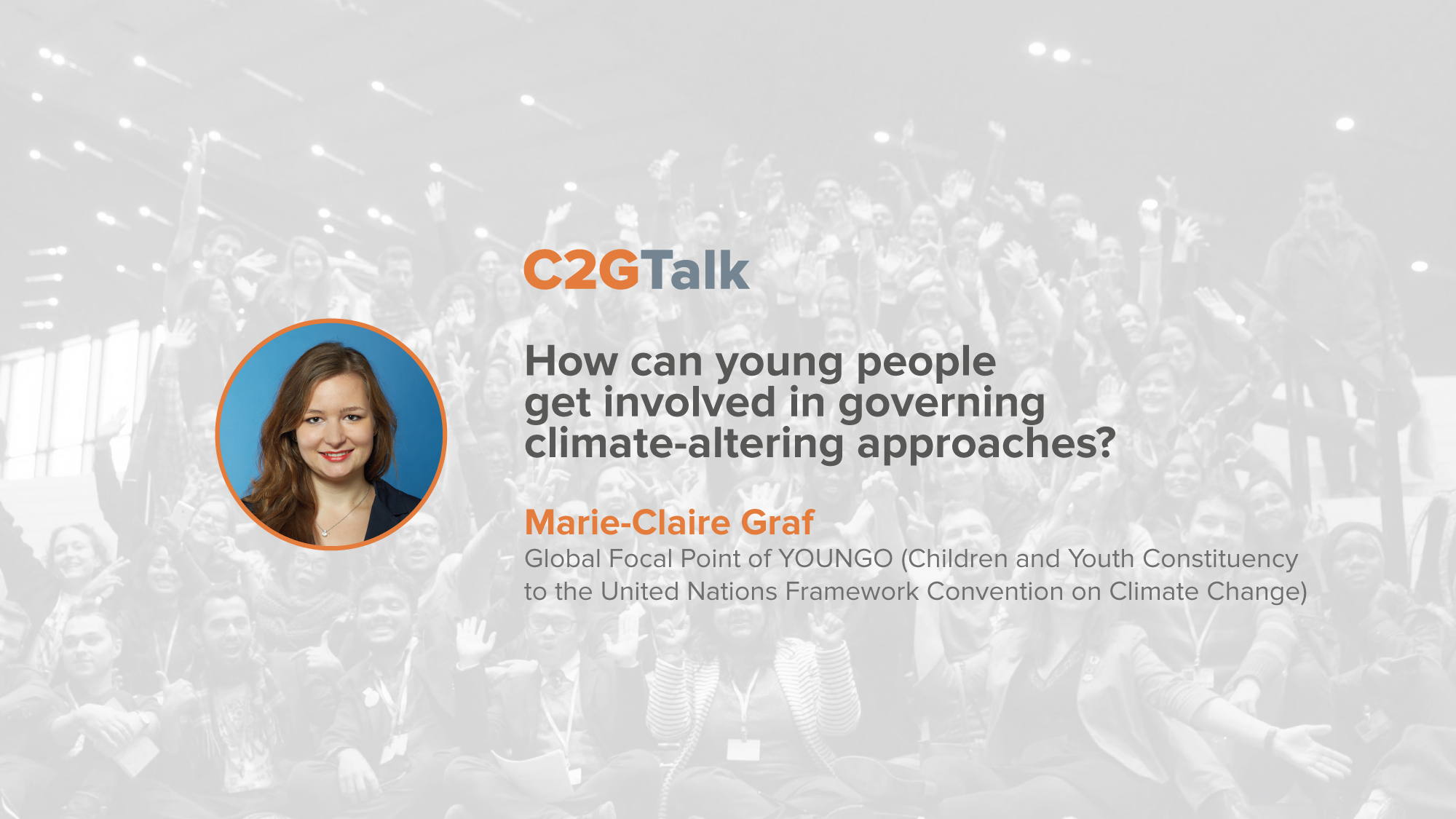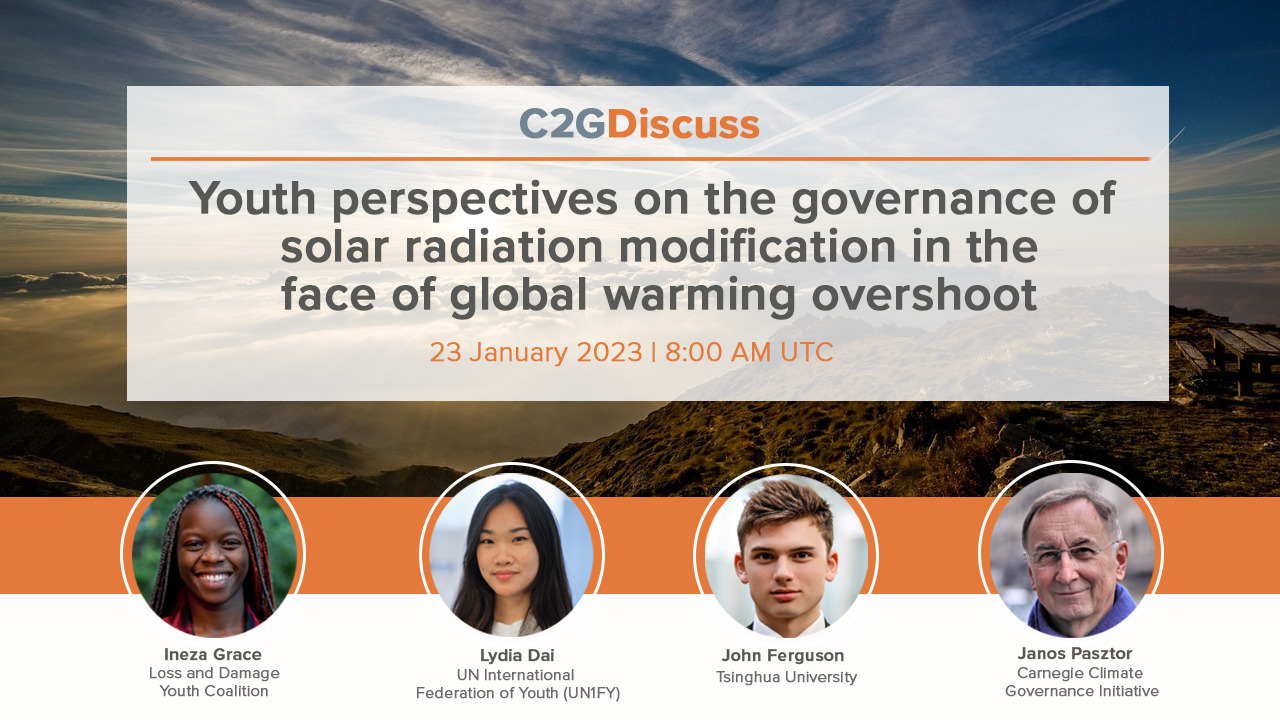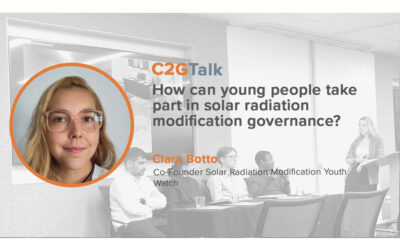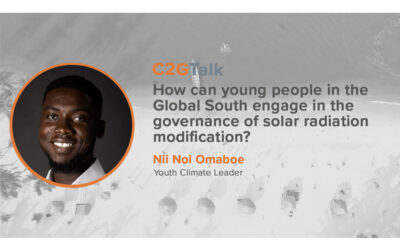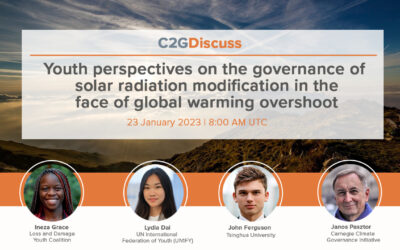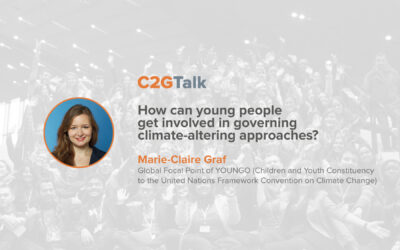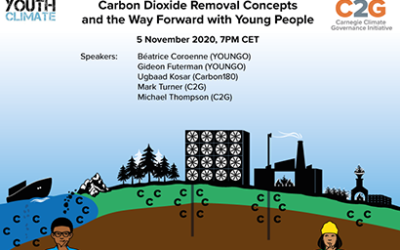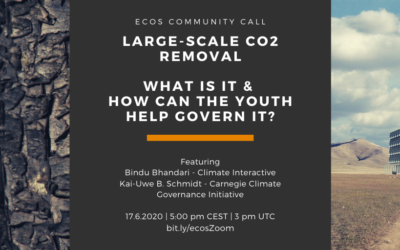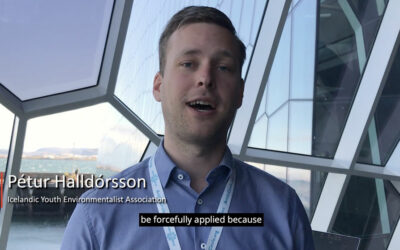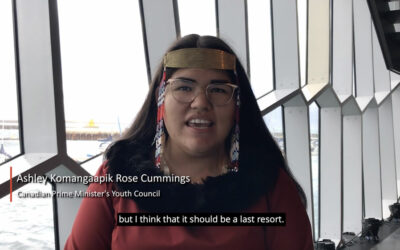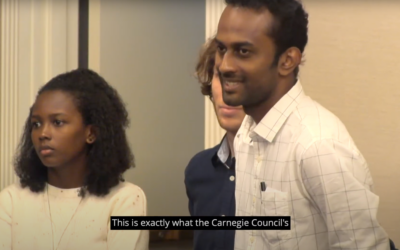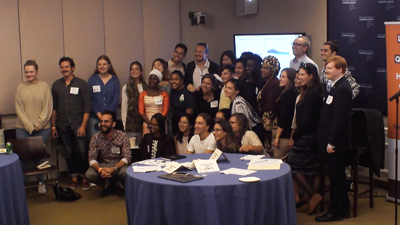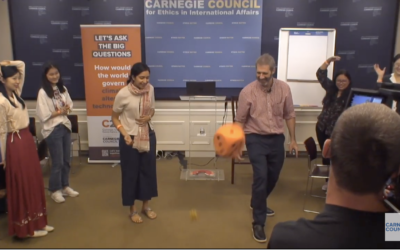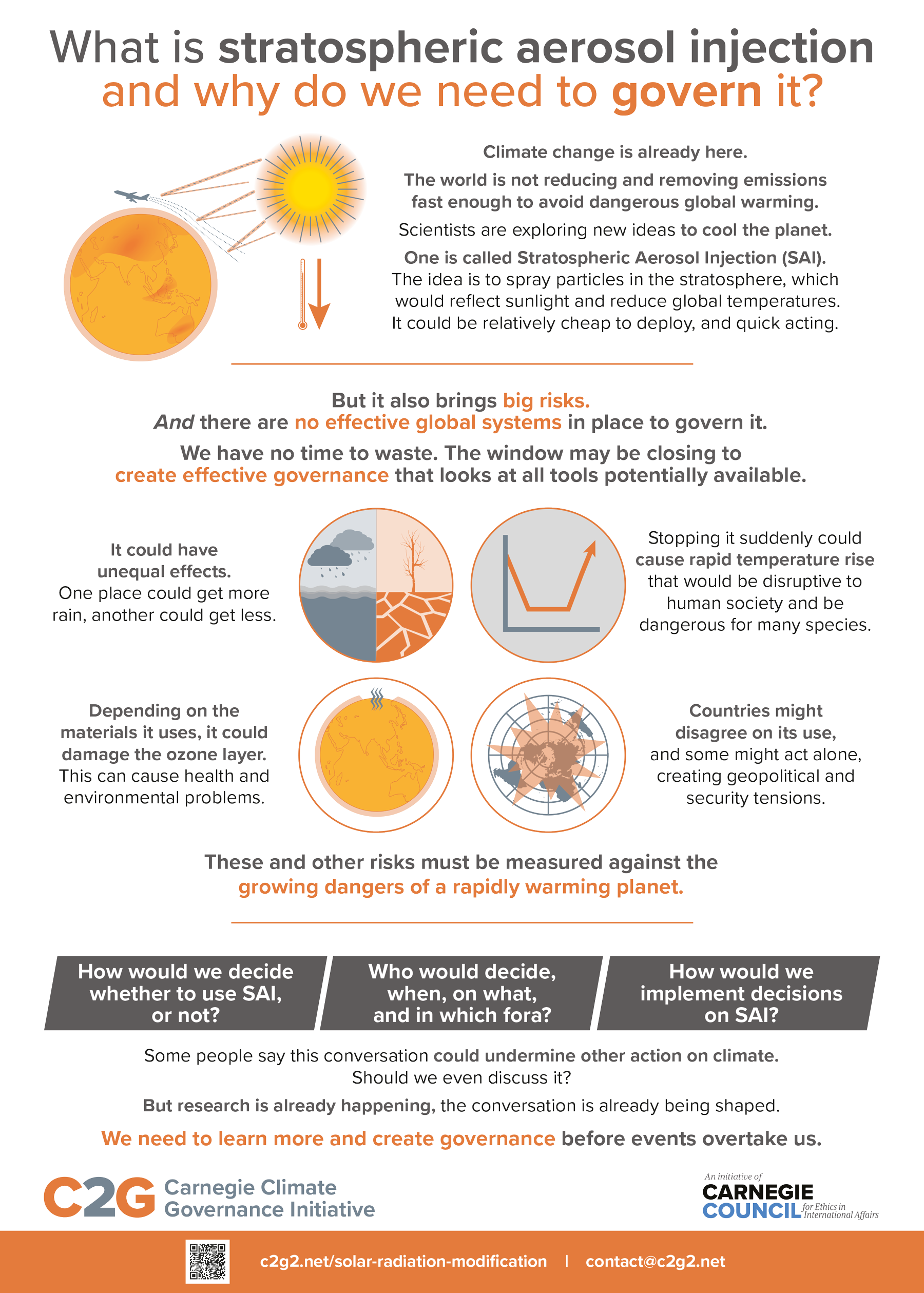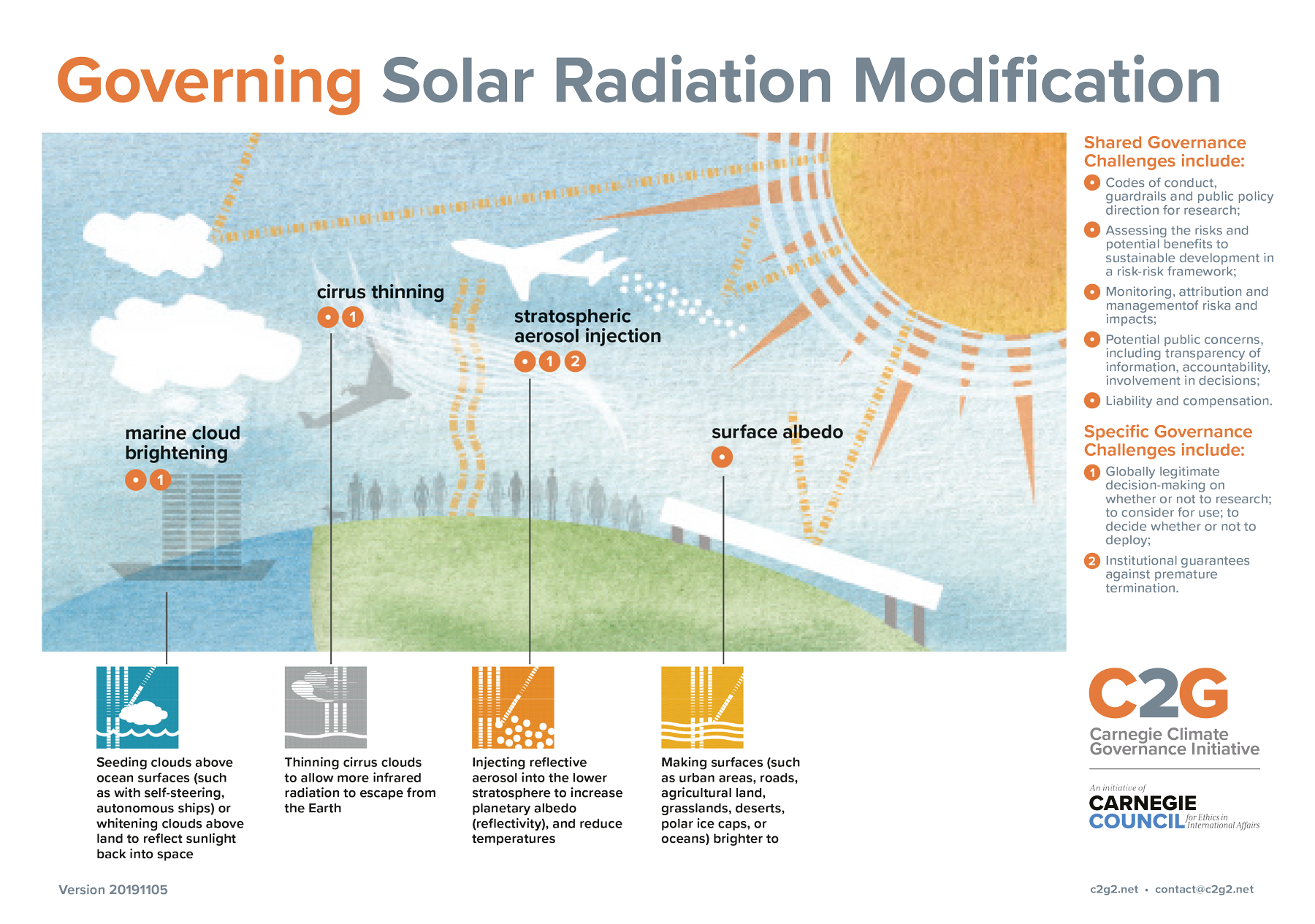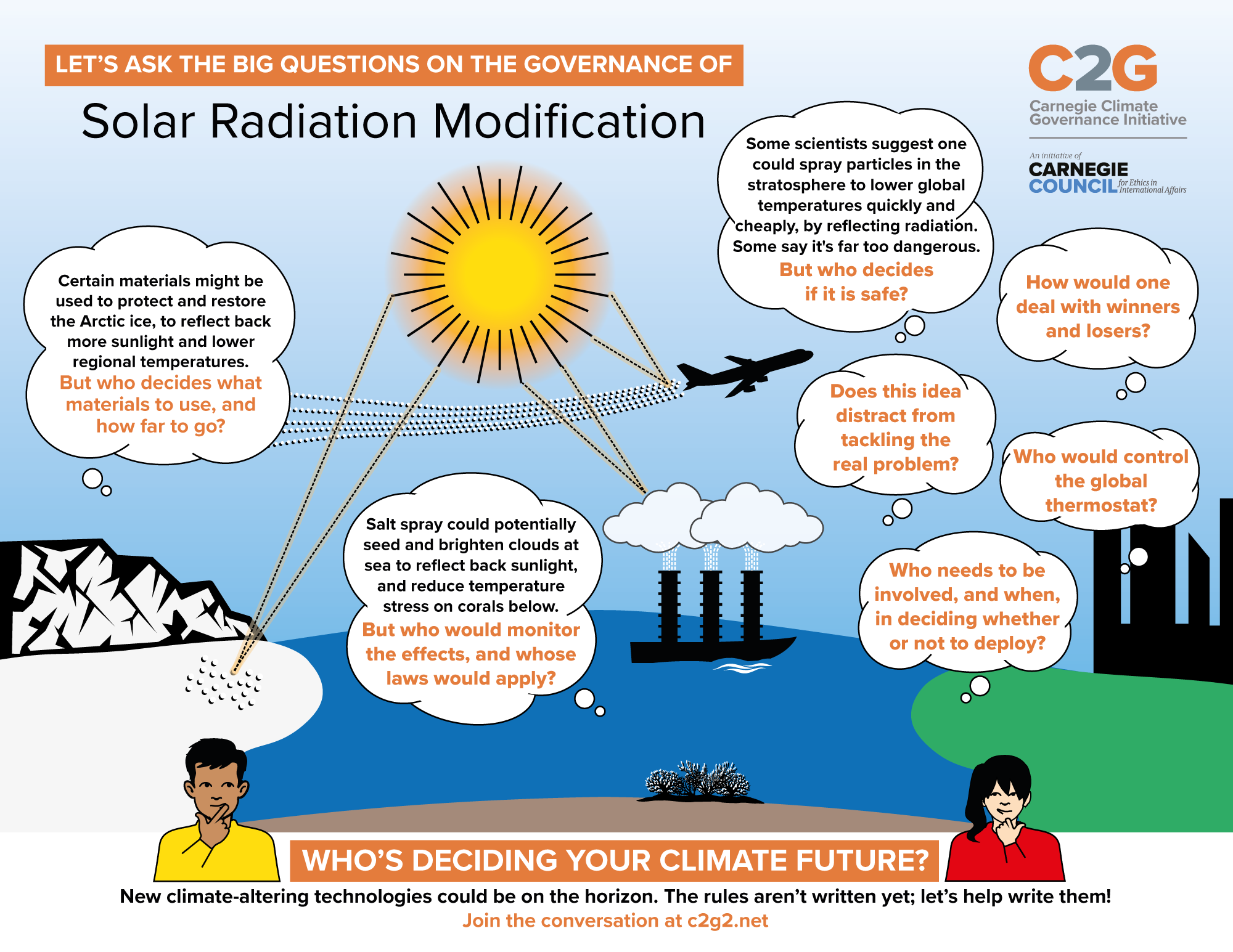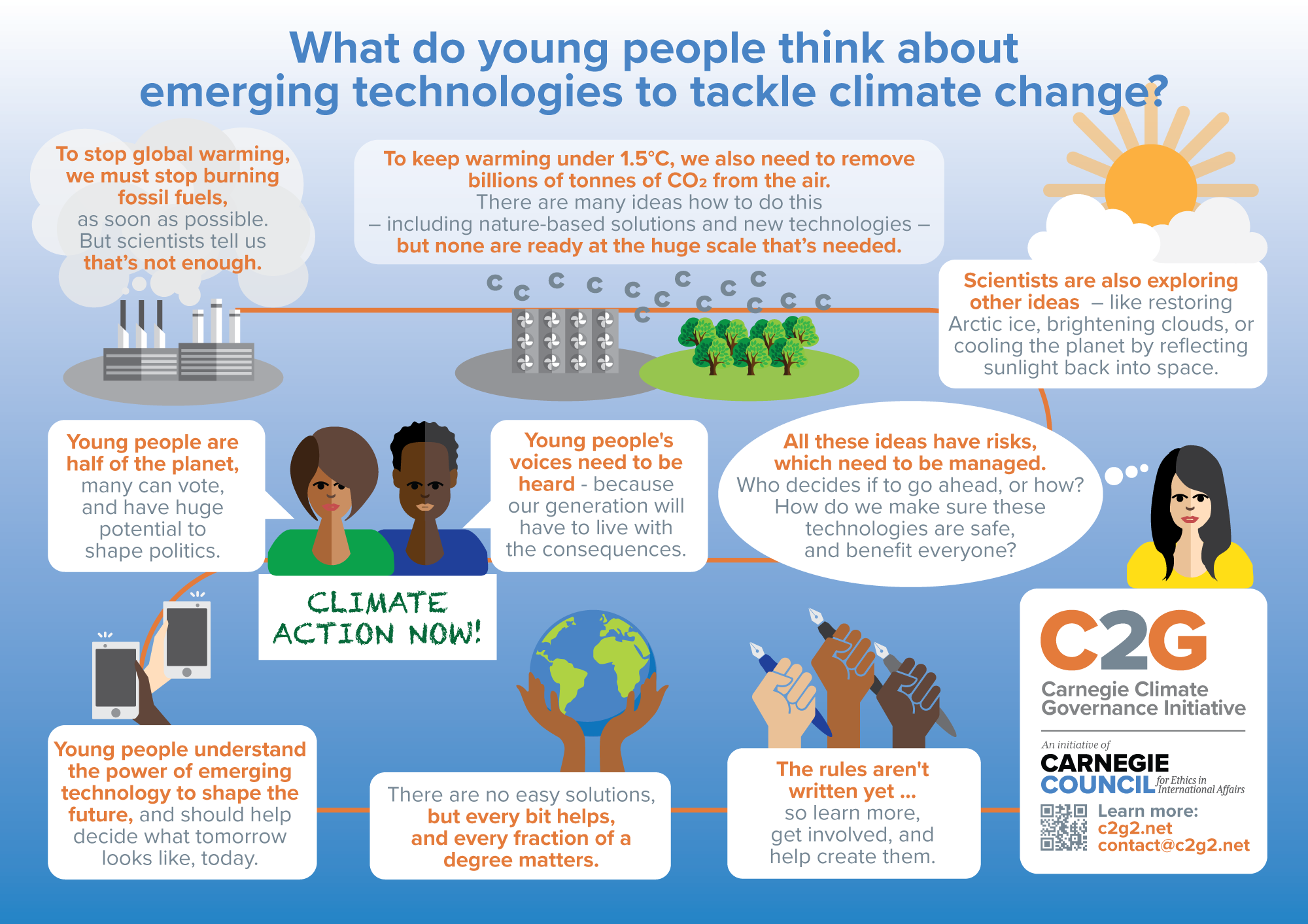Youth Voices for Emerging Climate Governance
Learning from experts and engaging with peers on the governance of solar radiation modification
Between 2022-23 C2G will support up to six Youth Climate Voices from around the world, aged between 19-24 to learn more about the need for strengthening governance for solar radiation modification in the context of the increasing likelihood of overshooting 1.5/2C warming and to catalyse the same learning amongst their peers. The project will provide participants with a unique opportunity to learn from a diverse range of leading international experts about the governance issues surrounding solar radiation modification and consequently contribute to emerging global discussions around this issue including through broadening the understanding of the issue among their peers.
The challenge…
Solar Radiation Modification (SRM), aims to address a symptom of climate change by reflecting sunlight back into space, or allowing more infrared radiation from Earth to escape, in order to reduce the Earth’s temperature. It includes various different proposed methods, none of which are ready for deployment. SRM could not be a substitute for reducing greenhouse gas emissions or removing atmospheric CO2 which must remain the primary effort of climate action. However, scientists have begun to explore SRM techniques, such as Stratospheric Aerosol Injection (SAI), Marine Cloud Brightening, and Cirrus Cloud Thinning, and concluded that some have potential to offset warming and ameliorate some climate hazards.
However, if they were to be implemented, SRM would introduce a widespread range of new risks to people and ecosystems. These risks are not well understood and could for example, exacerbate global inequality, poverty, peace and security and have serious implications for delivery of the UN Sustainable Development Goals (SDGs).
Awareness of SRM both within global policy circles and among the general public is low and perhaps more than any other potential climate change response option, the choice of whether or not to research, develop or even one day deploy SRM (e.g. SAI) would affect – for better or worse – everyone on the planet. Decisions made in the next few years on how to govern SAI may lock in these decisions for decades and constrain options available to future generations.
Young people are largely absent from early-stage conversations about SAI and its governance, even though they potentially have the most to gain or lose from any decisions made in the coming years on if, when, by who, and how SAI may or may not be used. It is important that young people be aware and informed about and their perspectives reflected in emerging discussion about SAI governance given its potential impacts on the global climate in both the short and long term.
Young people’s voices need to be heard in emerging governance conversations now, including e.g. when awareness is raised, research is defined, governance processes and activities are shaped and when global SAI guardrails and guidelines are still to be decided, and young people’s views can be most powerfully heard and have impact. That is why it’s critical to kickstart such conversations as soon as possible, and to encourage young people to learn more about these issues.
It is in everyone’s interest that SRM be governed effectively, and especially for young people who will inherit the consequences of the decisions and actions (or lack of them) made today to address a rapidly warming world. Young people globally are already experiencing the impacts of temperature rise, such as food insecurity, extreme weather and increased natural disasters, resulting in forced climate migration. The global south faces particular challenges from the impacts of climate change and the issues of climate justice and intergenerational equity are growing concerns. We therefore encourage applications from young people who can share a diversity of views and perspectives – whilst reaching and amplifying the voices of those who are often less well represented in international discussions.
In recent years, young people across the world have been increasingly engaged in some of the most dynamic, and visible climate mobilisation efforts, and policymakers (and the broader public) are increasingly listening. Some youth leaders who are already engaged in youth climate networks have expressed an interest to help their peers raise awareness, learn, from their views and participate in global discussions on SRM governance, with a focus on SAI. To address this challenge, the C2G has secured funding to support a time-limited project for up to six youth voices from around the world, in particular the global south to learn about, SRM and the need for its governance in the context of a world in which the 1.5C goal is increasingly likely to be exceeded, and to support them engage in activities to strengthen youth voices in international discussions.
You can subscribe to C2G’s newsletter here to receive information on our work and upcoming events.
Dig deeper into C2G’s youth resources!
How can young people get involved in governing climate-altering approaches?
Video/Audio
How can young people take part in SRM governance?
中文 | Español | FrançaisC2GTalk: An interview with Clara Botto, Co-Founder of Solar Radiation Modification Youth Watch How can young people take part in Solar Radiation Modification governance? 9 October 2023How can young people influence United Nations climate...
How can young people in the Global South engage in the governance of solar radiation modification?
中文 | Español | FrançaisC2GTalk: An interview with Nii Noi Omaboe, Youth Climate Leader How can young people in the Global South engage in the governance of solar radiation modification? 28 August 2023How is climate change affecting Ghana?What challenges do young...
Youth perspectives on the governance of solar radiation modification in the face of global warming overshoot
中文 | Español | Français C2GDiscuss Youth perspectives on the governance of solar radiation modification in the face of global warming overshoot 23 January 2023 This event was recorded on 8 December 2022, and will also be available with interpretation into 中文, Español...
How can young people get involved in governing climate-altering approaches?
中文 | Español | FrançaisC2GTalk: An interview with Marie-Claire Graf How can young people get involved in governing climate-altering approaches? 3 February 2021This interview was recorded on 15 December 2020, and is also available with interpretation into 中文, Español...
Carbon Dioxide Removal Concepts and the Way Forward with Young People
What is carbon dioxide removal? How might young people and YOUNGO, as the Children and Youth constituency to United Nations Framework Convention on Climate Change, start influencing discussions around carbon dioxide removal, to ensure better outcomes and decisions?...
Large-scale CO2 removal: What is it and how can the youth help govern it?
What role can young people play in governing large-scale CO2 removal? Kai-Uwe B. Schmidt from C2G and Bindu Bhandari from Climate Interactive shared their experience and insights into this challenge and opportunity in an ECOS Community Call facilitated by Viktor Jósa,...
Governing Emerging Climate Technologies in the Arctic – Pétur Halldórsson
Pétur Halldórsson is chair of Ungir umhverfissinnar (Icelandic Youth Environmentalist Association); sits as a board member of Landvernd, Iceland’s largest environmental NGO; and led the founding of the Arctic Youth Network. Pétur joined a session hosted by C2G on...
Saving the Arctic: Ethics, Values & the Next Generation – Ashley Komangaapik Rose Cummings
Ashley Komangaapik Rose Cummings is from Pangnirtung, Nunavut, Canada. She is a member of Canada’s Prime Minister’s Youth Council (PMYC) and does extensive work in youth engagement and advocacy for Inuit and youth. Ashley joined a session on "Saving the Arctic:...
Young People Tackle the Tough Decisions on Solar Radiation Modification
In support of the UN Youth Climate Summit, C2G hosted a series of interactive games for young climate leaders exploring how society might tackle difficult decisions about whether or not to deploy climate-altering technologies to tackle global heating. Some scientists...
Young People Tackle the Tough Decisions on Carbon Dioxide Removal
In support of the UN Youth Climate Summit, C2G hosted a series of interactive games for young climate leaders exploring how society might tackle difficult decisions about whether or not to deploy climate-altering technologies to tackle global heating. Climate...
Young People Tackle the Tough Decisions on Climate-Altering Technologies
In support of the UN Youth Climate Summit, C2G hosted a series of interactive games for young climate leaders exploring how society might tackle difficult decisions about whether or not to deploy climate-altering technologies to tackle global heating.
Blogs
Guest blog by Béatrice Coroenne
Guest blog by Roop Singh
Guest blog by Gideon Futerman
Infographics
Learn more about Solar Radiation Modification (SRM)
Below are a selection of resources you may find useful.
 This work is licensed under a Creative Commons Attribution-NonCommercial-NoDerivatives 4.0 International License. No attribution is needed, but if you do use attribution, please credit C2G.
This work is licensed under a Creative Commons Attribution-NonCommercial-NoDerivatives 4.0 International License. No attribution is needed, but if you do use attribution, please credit C2G.